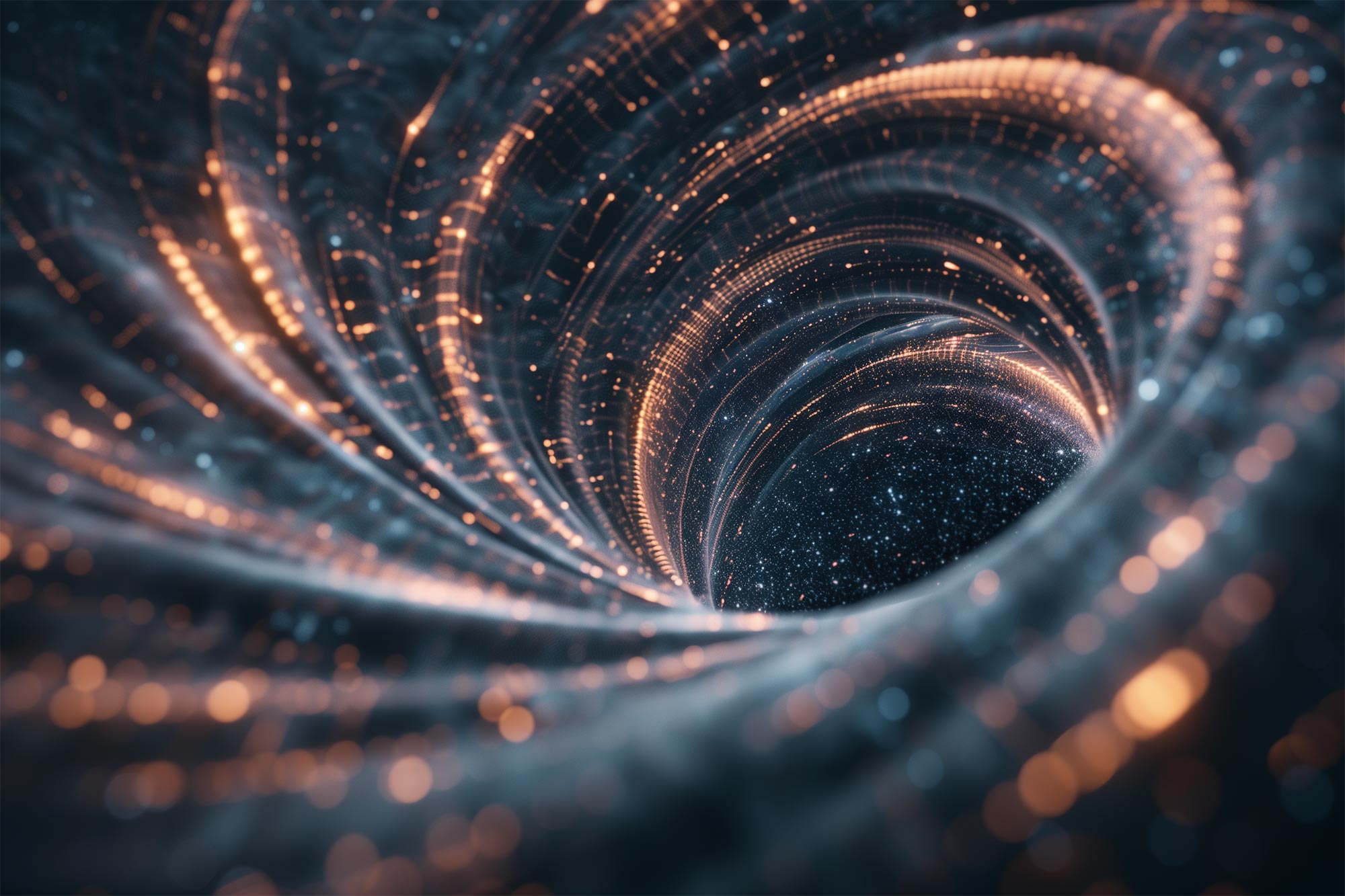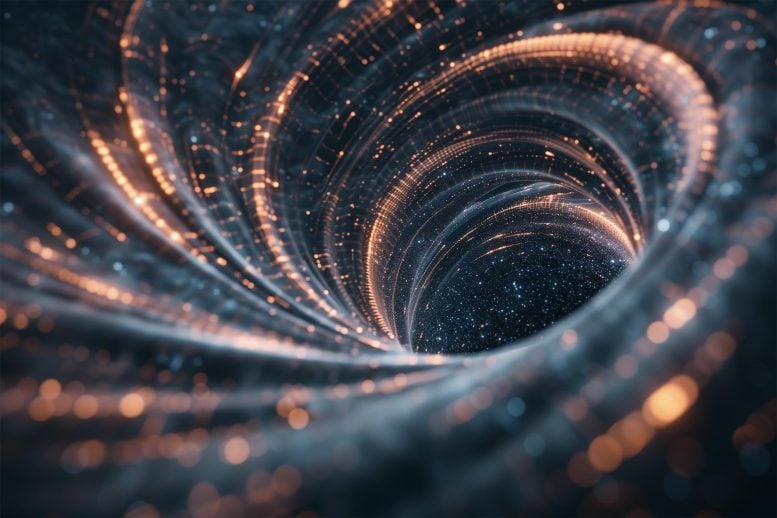

A new study reveals that black holes’ inner dynamics may challenge traditional models like the Kerr solution.
This research indicates that black holes may be less stable than previously thought due to energy accumulation within, possibly altering our understanding of these cosmic structures.
Black Holes and Their Mysteries
Black holes have long fascinated scientists. Although they are purely gravitational objects and relatively simple in structure, they conceal mysteries that defy our current understanding of the universe. Most research so far has concentrated on their outer features and the environments around them, leaving the internal workings of black holes largely unknown.
In a new study published on November 1 in Physical Review Letters, an international research team from the University of Southern Denmark, Charles University in Prague, Scuola Internazionale Superiore di Studi Avanzati (SISSA) in Trieste, and Victoria University of Wellington in New Zealand investigated the inner regions of black holes. By examining different spacetime models, they found intriguing evidence suggesting that our understanding of black holes may be incomplete.
New Insights Into Black Hole Dynamics
According to study co-author Raúl Carballo-Rubio, a postdoctoral researcher at the CP3-Origins center at the University of Southern Denmark, the research reveals that “the internal dynamics of black holes, which remain largely uncharted, could radically transform our understanding of these objects, even from an external perspective.” This insight opens new possibilities for future studies and a deeper comprehension of black holes’ true nature.
The Kerr solution to the equations of General Relativity is the most accurate representation of rotating black holes observed in gravitational astrophysics. It depicts a black hole as a maelstrom in spacetime, characterized by two horizons: an outer one, beyond which nothing can escape its gravitational pull, and an inner one that encloses a ring singularity, a region where spacetime as we know it ceases to exist. This model aligns well with observations, as deviations from Einstein’s theory outside the black hole are regulated by new physics parameters, which govern the core’s size and are expected to be quite small.
Energy Accumulation and Black Hole Instability
However, a recent study conducted by the international team mentioned above has highlighted a critical issue concerning the interior of these objects: while it was known that a static inner horizon is characterized by an infinite accumulation of energy, the study demonstrates that even more realistic dynamic black holes are subject to significant instability over relatively short timescales. This instability is due to an accumulation of energy that grows exponentially over time until it reaches a finite, but extremely large, value, capable of significantly influencing the overall geometry of the black hole and thus altering it.
The ultimate outcome of this dynamic process is still unclear, but the study implies that a black hole cannot stabilize in Kerr geometry, at least over long timescales, although the speed and magnitude of deviations from Kerr spacetime remain under investigation. As Stefano Liberati, professor at SISSA and one of the study’s authors, explains: “This result suggests that the Kerr solution—contrary to previous assumptions—cannot accurately describe observed black holes, at least on the typical timescales of their existence.”
Bridging Theory and Observation
Understanding the role of this instability is therefore essential for refining theoretical models of the interior of black holes and their relationship to the overall structure of these objects. In this sense, it could provide a missing link between theoretical models and potential observations of physics beyond General Relativity. Ultimately, these results open new perspectives for studying black holes, offering an opportunity to deepen our understanding of their internal nature and dynamic behavior.
Reference: “Mass Inflation without Cauchy Horizons” by Raúl Carballo-Rubio, Francesco Di Filippo, Stefano Liberati and Matt Visser, 1 November 2024, Physical Review Letters.
DOI: 10.1103/PhysRevLett.133.181402